The
Conformist
1969
Director: Bernardo Bertolucci
Starring: Jean-Louis Trintignant,
Stefania Sandrelli, Dominique Sanda, Gastone Moschin
I
love that Netflix keeps track of when I returned something, because it’s how I
can tell you that I’ve now seen The Conformist twice – once five
years ago, and once last night on the big screen at the Dryden. My memory of The Conformist from
seeing it five years ago was virtually nonexistent: the film failed to make an
impact on me. But I have to say that I
am standing by my policy of seeing films a second time before writing a review
or even definitively making up my mind. The
Conformist is pretty damn powerful on a big screen, and I was impressed
last night.
Marcello
Clerici (Trintignant) is living and working in 1938 Rome, and he is more than
happy – willing, even – to participate in Mussolini’s fascist regime. Slowly we learn that Marcello is purposely
seeking out conformity, as well as his motivations to do so. Too many differences in his childhood have
made him feel alienated, and he is desperate to fit in, even to the extent
marrying a woman, Giulia (Sandrelli), whom he finds thoroughly mediocre. The government soon asks Clerici to carry out
a hit for them, none other than Marcello’s former philosophy professor turned
political instigator. On the pretext of
honeymooning in Paris, Marcello seeks to reconnect with his old professor,
Quadri, but gets distracted by the professor’s young hot wife Anna (Sanda).
The
best part of The Conformist is the drop dead stunning cinematography (evidenced here by my inability to choose no less than seven shots of it to accompany my review, because it's my review, dammit, I can have lots of pictures if I want). This film is GORGEOUS. Mostly achieved through the production value
and distinct sets, Bertolucci’s cinematographer, Vittorio Storaro, goes to town
with the idea of “hard” fascism. Sparse,
cold, stone sets, vast and empty and intimidating, fill the Rome that Clerici
inhabits. Even when the action moves to
Paris, there is an emphasis on stone and metalwork backdrops over natural
elements. There is a sense of using
materials to control one’s environment, mirroring both Mussolini’s controlling
regime and Clerici’s maddening impulse to fit in. Additionally, the shapes are constantly
square and rectangular. Rectangles are
mean, they are hard, they can hurt, they are sharp, and this is everything in terms
of Marcello’s world. There are so many
squares framing nearly every single shot, and next to no softness or
circles. In fact, the first time I
noticed any kind of an arched frame in a shot was in Professor Quadri’s
apartment, which is significant as the Quadris are running a group of political
dissidents loudly vocalizing their displeasure with the fascist
dictatorship. They are against
everything that Clerici stands for, so it makes sense that we see Anna Quadri
lounging up against a huge curved doorway in contrast to all of Marcello’s
rectangles.
After
the amazing look of the film is the character of Marcello himself, especially
as portrayed by the fabulous Trintignant.
He’s tremendously good here, along with Bertolucci, at slowly building
Marcello Clerici. When we first meet
him, he seems incredibly focused on pulling off the job, a cold-blooded
assassin. We then flashback to previous
portions of Marcello’s life, not necessarily in chronological order, as it is
slowly revealed that he was bullied as a child and sexually assaulted by a
transvestite servant whom he then shot.
His mother is a morphine addict who is sleeping with her Asian chauffeur
who’s also her supplier. His father is
locked up in a mental hospital writing politically rebellious letters to the
government when he isn’t asking to be bound in a straightjacket. His best friend is smart as a whip but blind
as a bat. Marcello, who has been
surrounded by oddballs and estrangement his entire life, is desperate –
absolutely over the edge desperate – to fit in.
He hates his memories of his childhood.
He loathes his mother. Even his
blind best friend nauseates him from time to time, and we watch with a horrible
dawning comprehension as Marcello pulls away from him, being silent and still
so his friend cannot “see” him. When he
speaks so callously of his fiancée, I get it.
As awful a person as he is, I understand why Marcello feels the need to
conform. Realistically, it’s something I
face every day in my own classroom. I
see the students who have something about them that is different, and instead
of embracing their differences, they shun them and try so hard to fit in with
the “cool kids.” They might have more in
common with some of the other “outsiders,” but they want nothing to do with
them – they only want to be just like the “cool kids,” they want to
conform. If it means being cruel, then
so be it. Such are some of my students,
and such is Marcello. Sad, really.
Trintignant’s
body language is brilliant. He holds
Marcello’s body as if Marcello is afraid to really move it to its fullest
potential. He’s uncomfortably staid and
upright, even uptight. He never loosens,
not for a second. Trintignant’s Marcello
is always rigidly in control of his own action.
Watch him get a gun for the first time – he mimics the movements he’s
seen others make with a gun, but the actions don’t seem natural on him. He moves like a robot. He doesn’t turn his neck so much as he does
his entire body. Even when he’s with his
wife Giulia, he feels uncomfortable with the sexuality of the situation; it’s
like he doesn’t wholly know what to do.
It’s a brilliant way of showing Marcello’s mental rigidity manifested
outwardly.
When
you combine Marcello’s horrifying descent into frightening levels of conformity
with a heavily politicized narrative, I understand the fear that The
Conformist could be too dark, too heavy, and all in all too much. Unexpectedly, however, there is a distinct
lightness in tone and many moments of humor that pop up in the oddest of
places. Why, for example, is Marcello’s
boss’ desk completely covered with almonds?
Why do we first really meet Marcello when there is a girl group singing
a ridiculously cheery popular ditty in the background, complete with silly
choreography? Why is just a gigantic
statue head of Mussolini being continually carted around a government
building? These little touches of
surrealist humor make the film feel less downtrodden. Watch Marcello randomly grab Anna and duck
into a silly little closet. Watch
Marcello desperately try to wave off his security guard (Moschin) when he
doesn’t want to be followed while at the same time not alerting Giulia to his
presence. It’s actually pretty darn
funny. And speaking of Giulia, she goes
a long way to lightening the mood of the film; Giulia is all girly
superficiality and silliness, and when she can’t keep her hands off Marcello,
especially in an early scene, I laugh.
Laughing! In a movie like The
Conformist!
*******************************DISCUSSION
OF THE ENDING**********************************
Realistically,
though, the power of Bertolucci’s The Conformist lies mostly in how he
chooses to end the film, and although I dislike talking about endings of films
in general, I want to talk about this one.
Marcello’s situation in the film, although certainly serious, is always
tempered with the oddball touches of humor I mentioned above. All of that utterly dissipates in the final
twenty minutes of the film. Here, the
Fascist regime shows what it is truly capable of and Marcello realizes just how
deeply he’s in for it. He sits by,
paralyzed by fear, and watches with inaction as Quadri and Anna are coldly
killed. What’s so utterly unnerving in
their death scenes is that their deaths do not come quickly. They are killed slowly and they are utterly
consumed by fear and terror before they are killed. Listening to the terror in Anna’s voice as
she desperately screams for help, and it’s chilling. It’s scary.
You see precious little blood or gore (again, this was 1970 after all),
but the lack of background music and their prolonged deaths are frightening
enough.
But
it’s not these death scenes that really cap the film off. No, it’s the epilogue where we cut to
Marcello’s life a few years later on the night of Mussolini’s fall. What horrifies me most about this sequence is
Giulia’s character. In the entire film
up to that point, Giulia has been silly and narcissistic and flighty, comedic
relief and that’s it. When we see her a
few years later, all of that is gone.
She is stoic and silent, and frankly, it’s horrifying. This is how I understand the cost of
Marcello’s conformity. Marcello is still
Marcello, although he is cracking at this point and he will have his breakdown,
but it’s Giulia’s utter, devastating deflation that underlines the tragedy of
the situation. His action (or inaction)
has robbed her of her persona, dragging her down to a sad relic of her former
self.
*********************************
DONE WITH THAT THEN*****************************************
Oddly
funny, stunning cinematography, a great lead performance, and a tale that I
sadly see too often in modern day high school students meant I got so much more
out of my second viewing of The Conformist than I did the first
time around. I’m really not a huge fan
of Bertolucci’s work, but this one really struck me. It was more than worthwhile seeing it in a
theater.
Arbitrary
Rating: 8/10. Definitely better than I
remember.
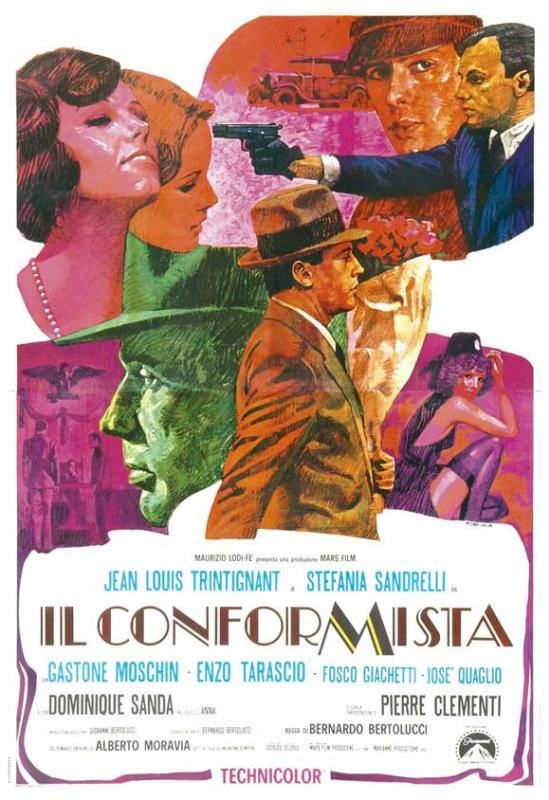
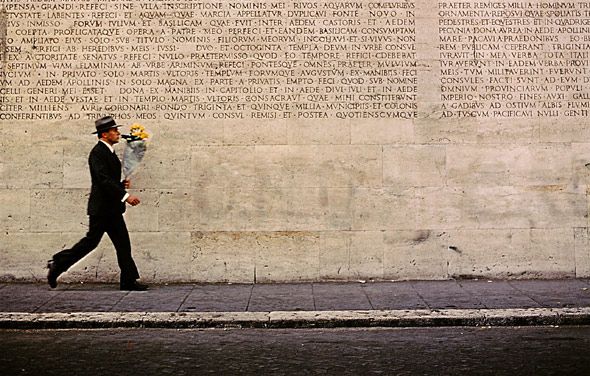

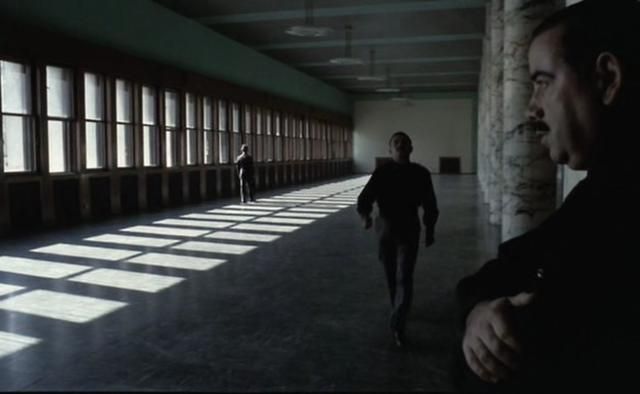
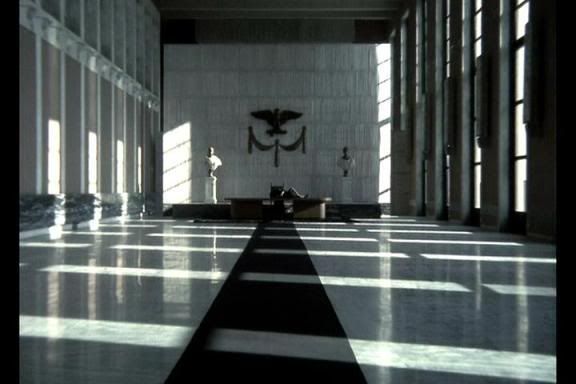
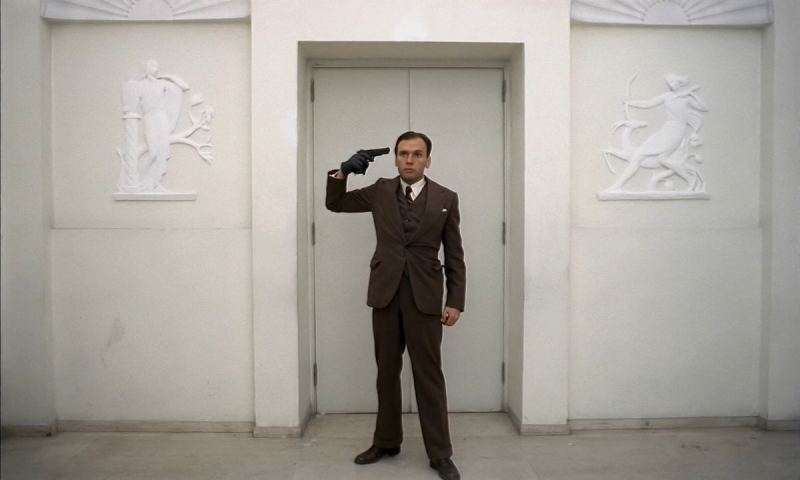
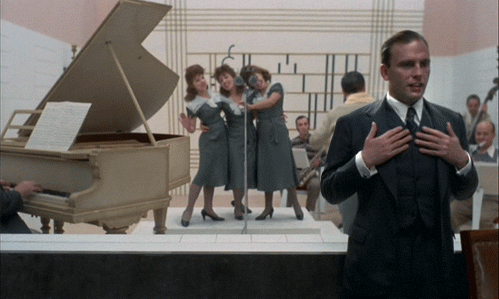
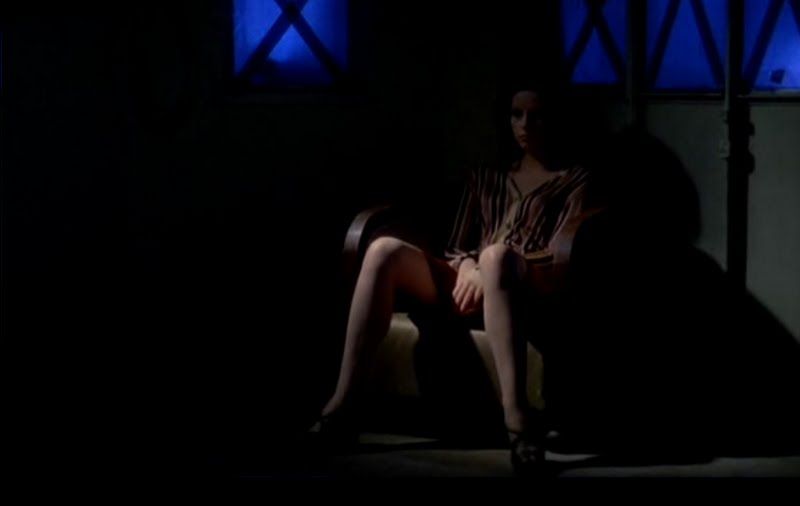
I saw this years ago and remember not being impressed but little else. I saw a dubbed version on video tape, however. Were you able to view a subtitled version? I am thinking that might make a difference in reaction. I would like to like it if you know what I mean.
ReplyDeleteI hate dubbing, and will ONLY watch an English-dubbed film if I have no. other. choice. Frankly, I hate the fact that many Italian movies in the sixties and seventies were blatantly and poorly overdubbed IN ITALIAN. '
DeleteYes, I saw a subtitled version. Makes a big difference. Dubbing is like nails on a chalkboard for me.
I know what you mean about wanting to like a film but it falling flat. Trust me, this one fell flat the first time around. I'm sure others won't have the same opinion of this the second time around as I did, but an immersive, big-screen experience was apparently what I needed to begin to feel like I understood why "The Conformist" is considered a worthy addition to 1001 Movies.
I saw this a couple of months ago and it didn't do much for me. I do agree that the cinematography was quite something. I tend to like Bertolucci's later films (i.e. The Last Emperor) far more than his early ones. The people who did the book tended to give us almost exclusively early works from those directors that they chose only a couple of films for. I think they were trying to get us to see where the director got some of his/her ideas that they used in their later films.
ReplyDeleteI don't tend to like Bertolucci very much, and I didn't particularly enjoy this one the first time I saw it, so I kind of expected my new take to be a bit against the grain with all my dear fellow bloggers. It's weird, but I TOTALLY know what you mean when you say it didn't do much for you, because that was my same initial reaction as well. Is everyone going to respond the way I did on a second viewing? Probably not. But, much to my surprise, the movie somehow clicked for me. It's not an easy movie, I think that much is true. I don't think a ton of Bertolucci's work is "easy."
DeleteInteresting point about early works by directors... the book makes some odd choices, no?